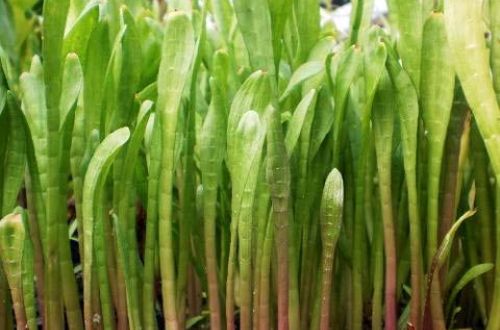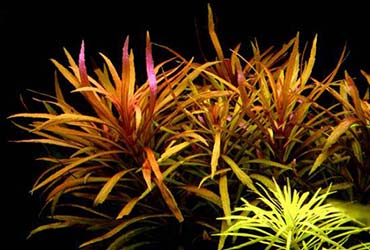
Pogostemon helfera
Pogostemon helferi, scientific name Pogostemon helferi. This plant has been known to botanists for more than 120 years, but it only appeared in the aquarium hobby in 1996. The natural habitat extends over a significant part of Southeast Asia. It occurs along the banks of rivers and streams, rooting in silty and sandy substrates or fixing on the surface of stones and rocks. During the summer rainy season, the dividing time is submerged. In the autumn and winter months, it grows as an ordinary emersed plant with a straight tall stem.
When in water, it forms compact bushes with a short stem and numerous leaves, resembling rosette plants. The leaf blade is elongated with a pronounced wavy edge. In favorable conditions, the leaves acquire a rich green color. In small aquariums it can be used in the central part of the composition. In large and medium-sized tanks, it is desirable to be placed in the foreground.
The plant is sensitive to lack of light. When shaded, the leaves lose their color, becoming yellowish. Healthy growth requires adequate levels of nitrates, phosphates, potassium and magnesium. The element iron equally with lighting affects the color of the leaves. Pogostemon helfera can equally successfully grow both on the ground and on the surface of snags and stones. In the latter case, additional fixing will be required, for example, with a fishing line, until the roots begin to hold the plant on their own.
Reproduction occurs by pruning and side shoots. When separating the cutting, it is important to prevent damage to the stem, i.e., the appearance of a dent at the cut point, which leads to subsequent decay. Cutting should be done with very sharp tools.





